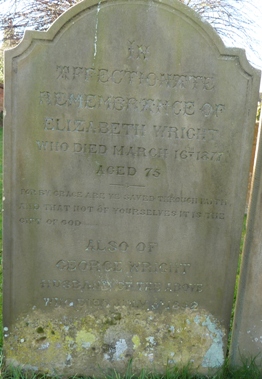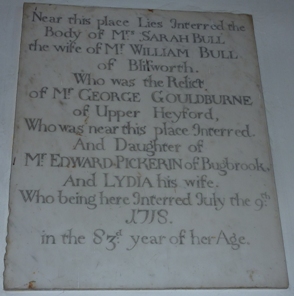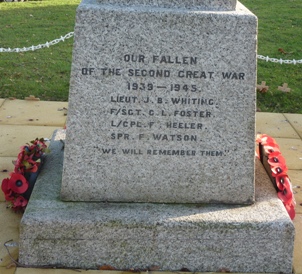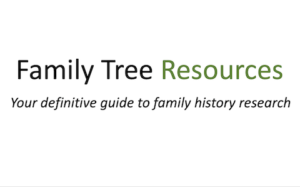Memorial Inscriptions are engravings on gravestones, plaques, cenotaphs or other commemorative items. They serve as a memorial to the dead, often being written by the deceased’s family to honour the memory of the deceased.
Rather than showing the burial date, as in a Parish Register, gravestones show the deceased’s date of death and their age. In some circumstances, the gravestone also shows the birth date of the deceased. Biographical details of the deceased are also sometimes recorded, and sometimes even the cause of death.
Many parishes and cemeteries have a plan showing the location of the grave so you can see where your ancestor was buried.
The earliest memorial inscriptions are often found inside churches. This could be because the person was influential in the church, such as a former vicar, who would have been a highly respected member of the community.
Most people who died were buried in a churchyard until the latter half of the eighteenth century, when they began to be buried in cemeteries because of the increasing population and migration from villages to towns and cities.
Some parishes found they had to open cemeteries because the church graveyard no longer fulfilled the necessary requirements. Nonconformist chapels often had their own burial grounds, and in certain situations these are still utilised today.
A person who had moved away from their home parish during their lifetime may have wished to be returned to their home parish to be buried, especially if the family owned the right to be buried in a specific place.
This could provide an invaluable clue to the family historian, especially in the period before census returns, as the birth place of the deceased may not have been known. Please remember that baptism dates are not birth dates, and may not necessarily have taken place in the parish in which the child was born.
In the case of a deceased married woman who you cannot trace, knowing her full date of birth may help you to determine who she married.
Memorial inscriptions can be useful in family history research because it may give more information than that written in a burial register.
If a person was buried before 1813, ages were often not recorded in a burial register at that time, especially a woman’s, who was not considered important.
It is also possible that you may not be able to find the burial record in the register because it is illegible or because that part of the register is missing.

It is not uncommon to find a husband and wife were buried together and sometimes a son or daughter as well, so several generations may be revealed which can help you to determine family relationships.
This is especially helpful if a married daughter is buried with her parents because her married name could be recorded on the gravestone.

As shown in this example, memorial inscriptions could list the parents of the deceased and her former husband. This is information that may not be in a parish register.
Memorial Cards
Memorial cards were distributed by grieving families to inform people of the death of a family member, becoming popular in Victorian times, and are the equivalent of modern day memorial programs handed out at funerals.
A memorial card usually listed the full name of the deceased, their death date, where the person was to be buried, and some appropriate verse. If the deceased was a child, the memorial card usually stated the parent’s names. If the deceased was a married woman, the card usually mentioned the name of her husband.
These cards were usually kept by the families in much the same way memorial programs are today. You should ask family members if they have kept any of these cards in memory of their ancestors.
Recording the details from the gravestone
Once you have found the gravestone of your deceased ancestor, you can choose how you wish to record this information.
If possible, take a photograph of the headstone for future reference. This may save you from having to transcribe the information.
If you decide to transcribe the information, you should take great care that you copy the information accurately. If you decide to abbreviate certain phrases, you should always abbreviate this phrase in the same way in order to avoid confusion later.
Gravestones are not necessarily stable – please take extra care whilst walking through cemeteries, especially when walking around older gravestones. If you have children with you, please make sure they do not play around the gravestones.
Titled Ancestors in the Family?
If you find a titled ancestor whilst conducting genealogical research, sometimes a family coat of arms or family crest is also on the gravestone which can help you to distinguish between families who have the same name.
Several generations may be buried in a family crypt or family vault, so you could discover information regarding these people from the records.
I Cannot Find a Gravestone For My Ancestor – Why Is This?
Some gravestones are eroded by the weather over the years which is a great shame. However some family history societies have published books of some monumental inscriptions for their area.
Some deceased people may not have a gravestone because the family could not afford one, so you may find your ancestor was buried in a mass grave, which can be very upsetting. This can be referred to as a pauper’s grave. This signifies that the local authority has had to pay for the funeral because the family lacked the means to do so.
If the deceased was poor, the grave was initially marked with a painted wooden board, but this would have been destroyed within a relatively short space of time, leaving the grave left unmarked.
It is also possible, however, that the deceased stated before their death they did not want the family to place a gravestone where they were buried because they did not want their resting place to be marked in this way.
You may find the cemetery in which your ancestor was interred is in an overgrown state especially if the cemetery is no longer in use.
Although a death certificate is always issued, the burial place of the deceased is not recorded, so you may have to look in various cemeteries in the area, especially if the person died in a city, in order to find your ancestor’s resting place.
My Ancestor Was Killed In The First Or Second World War
If your ancestor was killed during the First or Second World War, it is worth checking the local war memorial to see if their name is listed. Many soldiers who were killed in action are buried in military cemeteries in the country in which they lost their lives.
Many service personnel’s graves are cared for by the Commonwealth War Graves Commission, who also have a facility whereby you can search for your ancestors who were killed during both wars.

Find a Grave
A wonderful site called Find A Grave can also help you to find the resting place of your ancestors. It was established in 1995 and now has over 170 million memorials. It is an invaluable tool for people wishing to trace their family history.
Once you have found a person’s record, you will find that it not only gives the location of the grave, but you may also find that members of the family are included, giving you the opportunity to find relatives you may not have known about.
Please also view my guides to parish registers in general, baptism records, marriage records and burial records.
